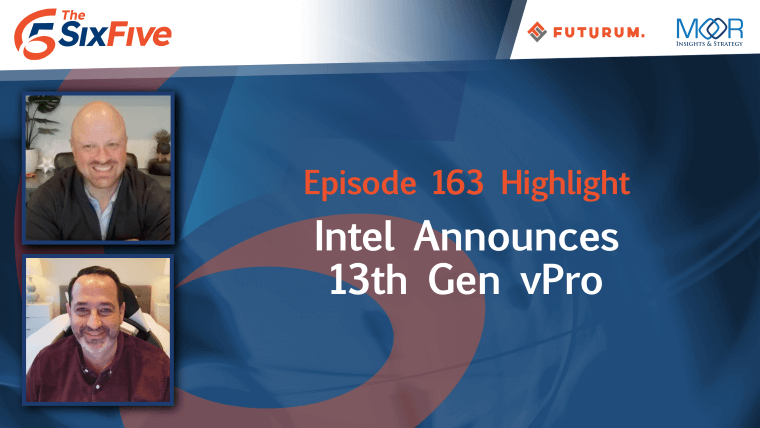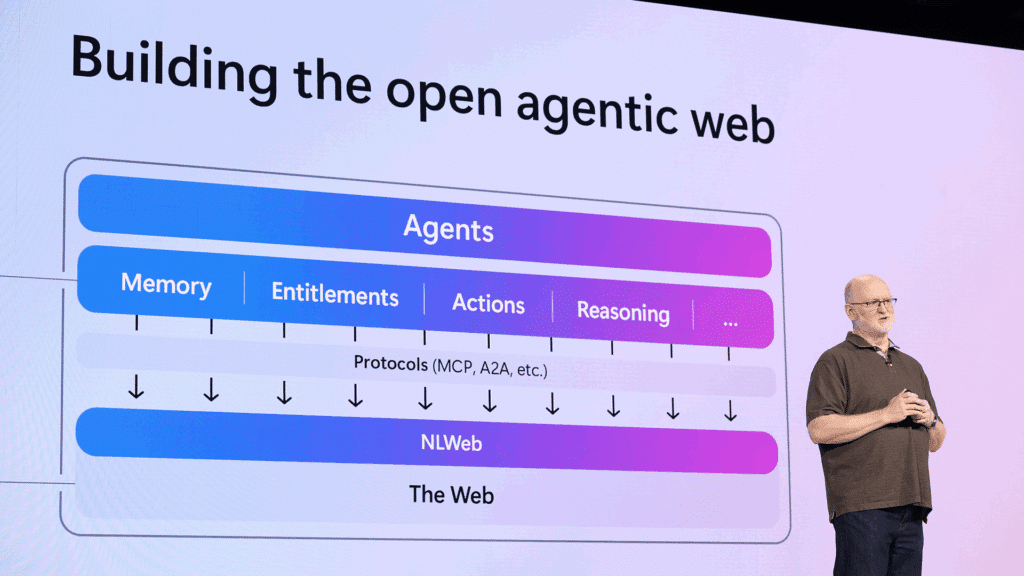The Six Five team discusses Intel’s announcement of their 13th Gen vPro.
If you are interested in watching the full episode you can check it out here.
Disclaimer: The Six Five Webcast is for information and entertainment purposes only. Over the course of this webcast, we may talk about companies that are publicly traded and we may even reference that fact and their equity share price, but please do not take anything that we say as a recommendation about what you should do with your investment dollars. We are not investment advisors and we ask that you do not treat us as such.
Transcript:
Daniel Newman: 13th Gen Intel vPro platform is now featured on the 13th Gen. For those that aren’t all that familiar with what the vPro platform is, it’s basically their integrated, it’s a validated platform from Intel and its purpose is really all about creating a more stable, more manageable and more secure device while maintaining extraordinarily high performance. That’s the way Intel really positions it. This generation and what the company has come out with really focuses largely on security. And a lot of what it’s talking about is that with hybrid work, with more end users out and about, with people not constantly on company networks and having visibility within IT departments, the attack surface continues to grow.
So in the 13th Gen, the company is really focusing on reducing that attack surface. And the company’s come out and said, in this new 13th Generation with vPro, they’re able to reduce it by 70%. And this is covered from one of our analysts – Mike Diamond – did a research note on it coming out so I’m kind of just highlighting some of it. This thing is segmented. So Pat, as you and I talk a lot about when we do some of our advising with them, there is a vPro Enterprise now and a vPro Essentials. So there are some different segmentations, meaning not all of the vPros are exactly the same, which is something I think a lot of us kind of are like, this gets hard. When Intel has a million SKUs. I3, I5, I7, I9, vPro, vPro Essential, vPro Pro. So this is something I’d definitely like to see the company working on, but I think what vPro really does stand for is, hey, these are the key capabilities that a device should have when it’s run by an enterprise with sensitive data on devices that need to be protected.
The big thing that this period two, was that the company included anti-theft technologies on the essentials level, which is more focused on the SMB and adding threat detection capability for that particular audience. So now vPro, even at the essential and SMB level is getting that additional layer, hardened layer of security to reduce theft of data from these devices. Pat, Intel had a great week a couple weeks back, especially on the data center. The company continues to advance, the market is looking to see it not only continued to kind of add features, but as the company that still has the leading market share of PCs, being able to deliver safe, secure, hardened lower threat surfaces for its massive deployments and enterprise clients is critical. So these updates are what I would call sort of tactical sort of incremental, but they’re important for Intel and Intel’s customers.
Patrick Moorhead: Intel not only has the dominant market share in PC processors, but they have an even higher market share when it comes to enterprise managed platforms. And oh by the way, the profitability of this vPro line is a lot higher than the standard Core line, all things equal. So this announcement was not only about expanding the TAM, it was trying to get incenting and giving enterprises an incentive to refresh. Because if you look out there and you have laptops that are four to five years old, they may not – well, they aren’t as secure as this new generation, based on some of the technologies that Intel has put in here. But also the company was making a play that said, ‘your workers can be more productive’ based on what they did. And one thing I really appreciate about this, and I’ve been a little bit critical of Intel on prior vPro announcements is, hey, give me some numbers of tell me how much more I am secure.
And Intel is a very risk averse company, they have a lot to lose when it comes to making claims. They don’t want to be sued for making claims that they can’t go up against, but they came out with some really hardcore numbers, 93% efficacy detecting the top ransomware attacks, 24% better than the software alone. That essentially means Windows 11 on AMD – 26% less breaches, 21% fewer impactful security events, 70% decrease in a tax surface. And I love that stuff. I have been complaining about that for forever and Intel absolutely delivered. The other thing I appreciated was that they came out with, again, some real numbers and real claims about why refresh? And they came out with a, hey, you might refresh, but it’s going to give you 14% lower five year cost of operations for PC.
And listen, I know I was in marketing forever and product management, I know that not everybody takes these claims to the bank, but what it does is it elicits and transfers confidence to me, that Intel is absolutely confident in what it’s doing. I don’t see in this latest wave of PCs the competition doing anything that unseats Intel with vPro. Maybe we’ll see something in the future, maybe we won’t from AMD and Qualcomm aligning itself with Windows and some of the special security features that Microsoft is working on. So congratulations, Intel. Keep the ball rolling. You know when something has a double-digit generational thing, something’s going right and I think this was a really good foot forward.
Author Information
Daniel is the CEO of The Futurum Group. Living his life at the intersection of people and technology, Daniel works with the world’s largest technology brands exploring Digital Transformation and how it is influencing the enterprise.
From the leading edge of AI to global technology policy, Daniel makes the connections between business, people and tech that are required for companies to benefit most from their technology investments. Daniel is a top 5 globally ranked industry analyst and his ideas are regularly cited or shared in television appearances by CNBC, Bloomberg, Wall Street Journal and hundreds of other sites around the world.
A 7x Best-Selling Author including his most recent book “Human/Machine.” Daniel is also a Forbes and MarketWatch (Dow Jones) contributor.
An MBA and Former Graduate Adjunct Faculty, Daniel is an Austin Texas transplant after 40 years in Chicago. His speaking takes him around the world each year as he shares his vision of the role technology will play in our future.





